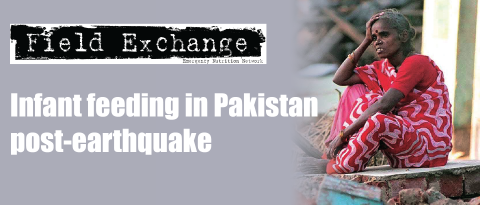Importance of non-DAC donors in humanitarian aid
The bulk of humanitarian financing comes from a set of wealthy industrialised countries, a group best represented by the Development Assistance Committee (DAC) of the Organisation for Economic Cooperation and Development (OECD). However, a much more diverse range of official donors are involved in humanitarian response. States in the Gulf are particularly active, as are countries in Asia, the accession states to the European Union (EU), South Africa, and countries in Latin America. These donors have been engaged in humanitarian response for many years and are outside the traditional 'club' of the DAC and other key fora in which the policy, principles and practices of humanitarian donorship are discussed and debated.
A report just published by HPG1 explores the role of these donors in international humanitarian action. It details their history of aid-giving, financing trends and institutional and policy frameworks, as well as the implications of their efforts for the international humanitarian system.
As with the DAC donors, a range of political, economic, strategic and religious factors underpin aid donorship among non-DAC countries. The political origins of aid programmes in China, India and Yugoslavia, for instance, can be traced back to the formation of the Non-Aligned Movement (NAM) in the 1950s, which formulated a rationale for assistance between developing countries. The principles of the NAM - in particular respect for sovereignty and territorial integrity - remain important today, and inform criticism of western governments' adoption of humanitarian intervention as a way of furthering broader political ambitions.
For most countries, economic growth has also been a key determinant of aid, especially for the oil-rich countries of the Gulf. Security factors too are important -for South Korea and China, security concerns related to North Korea have always loomed large, while concerns for Balkan stability were important in stimulating aid programmes from Central European states, such as Slovenia, in the 1990s.
Very few non-DAC states articulate the objectives of official humanitarian aid. Decision-making and resource allocation tend to be spread across a number of departments, each controlling small amounts of 'official aid' expenditure. This makes it difficult to trace and measure aid spending, a difficulty compounded by the fact that 'official aid' is not consistently defined. The scope and nature of the activities that these states call 'humanitarian' often seem to reflect a wider and more complex interpretation of the term than is the case within the DAC.
Indicative findings of the research suggest that non-DAC donors represent up to 12% of official humanitarian financing in any given year. These donors are engaging in a growing number of countries, though they concentrate the bulk of their resources on a few specific crises, particularly in neighbouring countries. There is a strong preference for bilateral aid over multilateral routes, particularly government- to-government, as well as through national operational agencies like the Red Cross/Red Crescent societies. This preference for bilateral routes reflects a view that aid is part of a deeper, mutually beneficial partnership. It also stems from a desire for visibility, and for aid to be delivered in a timely manner.
Non-DAC donors remain under-represented in the international fora in which aid policy is discussed and decisions are made. However, as their share of official humanitarian assistance is likely to grow considerably, especially if aidgiving from countries such as China and India remain linked to economic growth, it is crucial that these governments are encouraged to engage in greater dialogue with other donors and to participate more fully in international debates.
There is no easy way to bring this diverse range of donors into the key fora in which humanitarian policy is discussed. Groupings like the DAC have restricted membership and it is unlikely that the DAC could ever be truly representative of the global pool of donor governments.
There are signs that some of these challenges are beginning to be addressed. New partnerships have been established between non-DAC donors and UN humanitarian agencies and the Red Cross/Red Crescent Movement. DAC donors have sought to strengthen their links with non-DAC states, both through the forum of the DAC and by building bilateral aid relations. Also, ongoing investment in South-South cooperation, as well as utilising regional fora as mechanisms for aid policy coordination and dialogue, have been key recurring issues on the non-DAC aid agenda, and are likely to remain important.
1Harmer A and Cotterrell L (2005). Diversity in donorship. The changing landscape of official humanitarian aid. HPG Report 20, September 2005
Imported from FEX website


